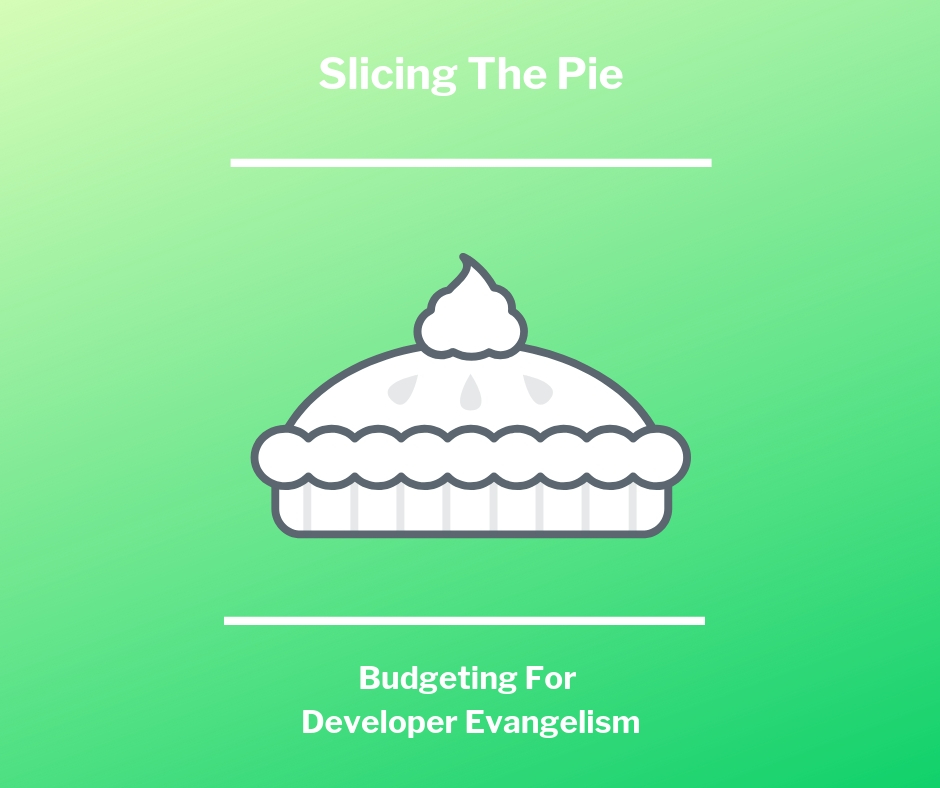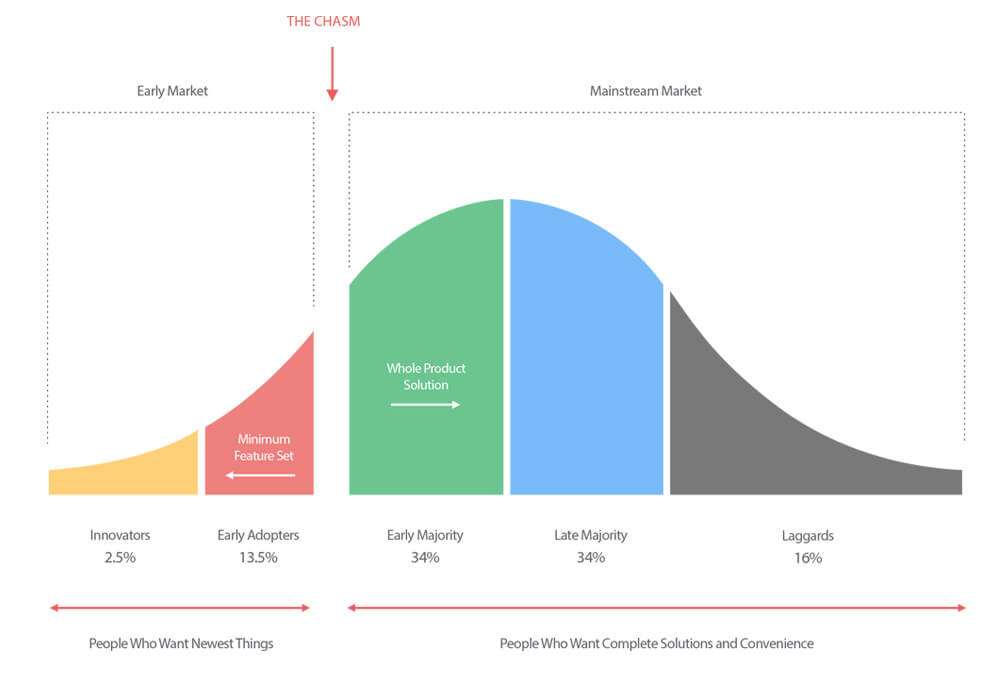
I grabbed coffee last year with an unusually blunt founder with decades of corporate leadership experience. He cut to the chase faster than most of the folks I talk to exploring developer relations for the first time.
“I have no idea what makes sense for spending on this stuff, Rob,” he admitted. “I’ve talked to ten different people running devrel programs today. Eight were not on the hook for a real number, one had a number so high I think he was lying and the other had a number so low I don’t think the company is serious about it.”
“How much should I be spending on this?”
His frustration is a fair one. While developer evangelism has been around for a long time, we’re still only a decade into it being a core function of a company’s go-to-market. Sun, Microsoft, Apple, HP, Creative Labs and many others were doing devrel (impressively, at that) back in the 80’s, but they were always attached at the hip with a successful consumer marketing or enterprise sales operation. Those groups were tiny rounding errors against the annual spend of their gigantic marketing and sales organizations and were folded as a line item into some other awareness, adoption or activation initiative.
Managing a developer evangelism budget discretely from its sponsoring marketing, sales or engineering organization is a fairly new thing. While every MBA program in the world will have widely accepted rules of thumb on the appropriate percentages and ratios for your spend in many areas, budgeting this weird devrel thing doesn’t share that breadth of sample. Little surprise then the experienced founder I spoke with was getting a seemingly different answer every time he asked about budget.
Starting From The Top
A good place to start determining our developer relations budget is with the overall allocation your company is putting to bringing your product to market. First question to answer is who buys the product – the developer’s employer or the developer herself?
Most business-to-business products are going to put their overall marketing spend at 9-12% of the operating budget or, if profitable, 7-9% of revenue. Consumer plays are going to drop more as a percentage: 14-16% of operating budget or 9-12% of revenue if profitable make sense here. Mapping B2B percentages to reaching the developer’s employer and B2C percentages to reaching the developer herself is a decent starting point.
The next decision point is identifying the direct contribution to revenue for our developer product. If our developer product is 100% of our revenue, our allocation for the developer relations function should be the largest in our marketing mix. Examples here would be Twilio, Atlassian, and GitHub.
If our developer product is a minority revenue contributor that operates in service of a larger business unit, our allocation for the developer relations function should be proportional to that unit’s primary marketing function. Using easy math, if our cloud hosting service is driving $10 million and our web API is driving $3 million, allocating 30% of our cloud hosting marketing org’s budget to our dev rel crew is a decent starting point. Examples here are Microsoft, Salesforce, and Google.
Finally, if our developer product doesn’t drive revenue directly, our investment here should roll into whatever function your developer product is meant to serve. Common examples here are web APIs that are attached to consumer products like Spotify, New York Times or Anki. Some of these APIs are intended to support partnership revenue, subscription revenue or market expansion to the creator / maker audience. For these types of developer products, keeping those devrel teams small and embedded with the sponsoring revenue unit is key.
The last top line consideration is if we want to go to the audience or we want them to come to us. Most developer outreach programs go to developers where they live online or offline with <5 first party developer executions per year. Others, like Apple and Amazon, almost exclusively throw first party events and invite their developer communities to attend.
Both approaches have their merits and most of the consideration here comes down to branding. First party is three times more expensive.
Breaking It Down
Now that we have a sense of what to spend overall, the next question is how to break that down into a real budget.
With the top line number in front of us, the first division we can make into headcount and program spend. Ask any MBA and she’ll tell you that a healthy mix for a marketing organization is 40% on people and 60% on program spend. For developer evangelism, that ratio gets inverted.
There are a few reasons for allocating 60% on people and 40% on spend for developer relations:
- The talent is way more expensive than other marketing. Anyone who can code can make $115k anywhere – a $70k associate req is not going to draw the folks you need.
- Program spend is way less expensive than other marketing. There are only 23 million developers on planet Earth – the tiny size of the audience scales down everything you would buy.
- There are scant few strategic vendors available to outsource this work. There’s no Edelman for devrel.
The next consideration we make is where our developer product is sitting on the adoption cycle.

If we consider our developer funnel broadly to be awareness, understanding, adoption and activation, we weight our investment in each of those areas depending on our position and velocity on adoption.
Further left we are on the curve, we invest more at the top of our funnel. Further right we are on the curve, we invest more at the bottom of the funnel.
Our velocity will be a multiplier of our spend against our product fit. If we are moving slow, we’ll put more money in to accelerate. If we aren’t moving at all or regressing, likelihood is high some product adjustment is needed.
Given the still nascent state of software, there are precious few developer products in the whole of the world that are past Early Majority. If you are evangelizing C# or Java, you don’t need anyone’s advice on your budget.
For the rest of us, that means we’ll be putting most of our budget in awareness, understanding and adoption.
Examples
“Okay – thanks for all that, Rob. So how many events should I do this year?”
With some hand-wavey guidelines established, let’s take a look at a few scenarios for the company stages I encounter the most looking for advice on budgeting their devrel.
First, if you’re just starting out with your first product, just hire one evangelist and hustle like crazy. The product is not ready to go whole hog on a program yet. For folks past this immediate stage, here’s what I would sketch out as budgetary guidance.
We’ll highlight four main categories to keep things simple. Head Count will represents the full-time employees in our devrel crew. Events will represent the total annual conferences, meetups, hackathons and other types of offline executions with developer audiences. Content covers the creation and distribution of technical content that helps developers adopt and activate as your customer. Promo is a catch all spend category that will cover your spending on digital advertising, social advertising, email marketing, and measurement tooling.
Kickstart
We’ve got some early customers that love the product and some awareness in our hometown – time to go snag those first 100 paying customers. We’re going to market with a $700k overall budget.
Our strategy for this year is to kickstart our developer evangelism squad, capture Innovators’ awareness with strong event coverage and invest in some content for adoption and activation.
| Revenue Contribution | Budget | Head Count | Events | Content | Promo |
| Primary | $490k | 2 | 67 | $12k | $44k |
| Additional | $210k | 1 | 18 | $12k | $12k |
| None | $70k | 0 | 5 | $41k | $17k |
Going Pro
We’re starting to grow our first revenue base and building out a professional go-to-market operation for the first time. We’ve brought in a head of the marketing org, add one or two additional core marketing disciplines and grabbed some rainmakers on the sales side. With $1.5 million in the marketing tank, it’s time to build a growth engine.
We’re staying focused on top-of-funnel with the objective of picking up some meaningful Early Adopters. We up our investment in the creation and promotion of content, building a meaningful technical content pipeline for the first time. We start professionalizing the tool stack to better measure our work.
| Revenue Contribution | Budget | Head Count | Events | Content | Promo |
| Primary | $1M | 4 | 158 | $54k | $80k |
| Additional | $450k | 2 | 60 | $16k | $14k |
| None | $300k | 1 | 38 | $52k | $21k |
Accelerating Growth
We’ve got traction, product fit and are ready for the march to the chasm. Time to strip the low hanging fruit from the trees and start setting the table for the Early Majority. We’re allocating $5M to marketing our developer product – let’s mash the pedal to the floor.
By now, we’re getting plenty of low-cost, no-cost event opportunities in the door, so we adjust our mix to put more individual spend into a smaller number of events. We also start hiring some dedicated content producers and invest more heavily in the promotion of that content. Finally, we start doing video for the time.
| Revenue Contribution | Budget | Head Count | Events | Content | Promo |
| Primary | $3.5M | 10 | 280 | $619k | $820k |
| Additional | $1.5M | 5 | 188 | $150k | $224k |
| None | $500k | 2 | 15 | $119k | $51k |
Crossing the Chasm
Around here is when a lot of outfits start talking about “getting into the enterprise.” You feel like you’re hitting a revenue plateau, the easy wins aren’t coming in the door anymore and there’s some question around the company whether this developer thing is working at all.
Every technology hits this wall and the only way across is to build the bridge. We’ll put in $7M into marketing to punch through. We continue to scale acceleration of our offline activity and ramp up the technical content farm. We put more promotion around that content and spin up some additional social programs on Stack Overflow.
| Revenue Contribution | Budget | Head Count | Events | Content | Promo |
| Primary | $7M | 18 | 430 | $1.7M | $1.8M |
| Additional | $3M | 8 | 180 | $580k | $864k |
| None | $1M | 4 | 30 | $238k | $98k |
Pulling The Levers
Compared to other parts of your go-to-market strategy, budgeting for developer evangelism is not particularly complex. Knowing healthy ratios and adjusting the dials for what makes sense for your product and your audience can get you into a responsible and effective budget without much effort.
Budgets for developer relations vary wildly from organization to organization. Hopefully this helps provides some broad guidelines to put together a budget that works for your developer product. If you’re looking for a little more detail with breakouts for digital advertising, social advertising and tooling or you would like to input your own values for your growth stage, feel free to check out this spreadsheet.
This remains an underdocumented part of devrel. If you’re managing such a budget today, you’re warmly invited to share what you learned working those spends in the comments below.